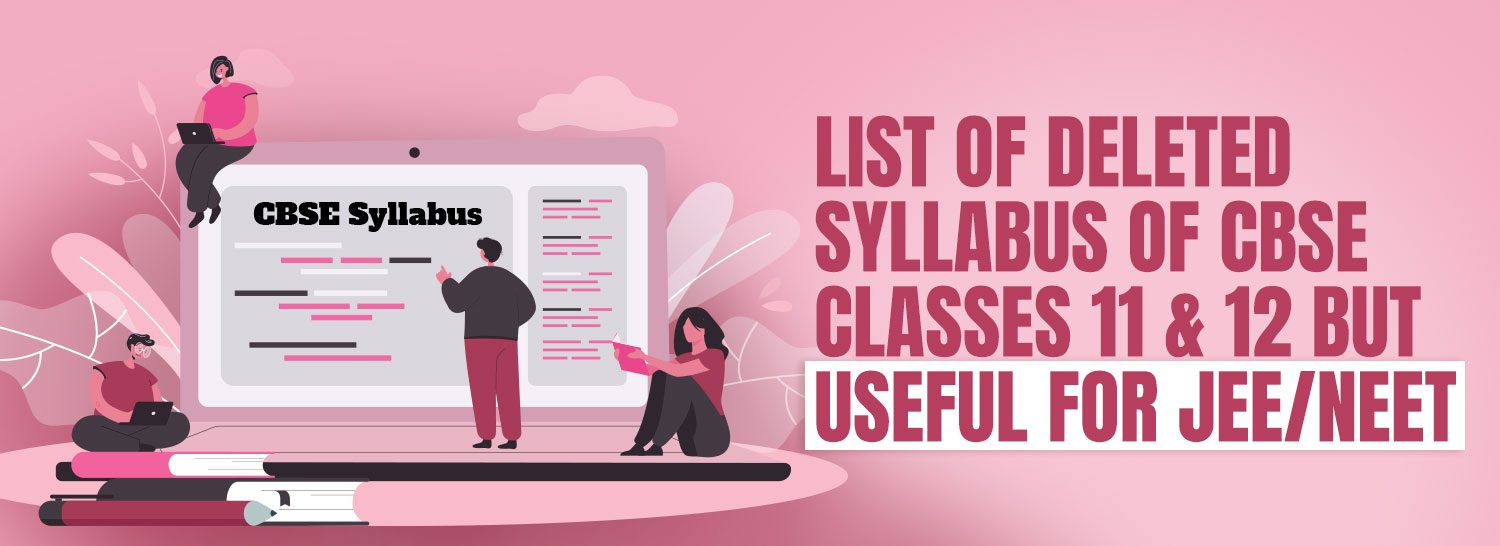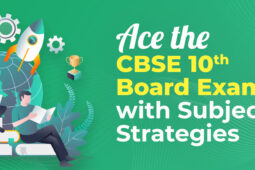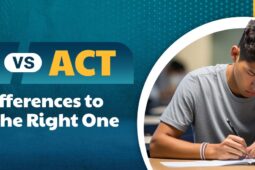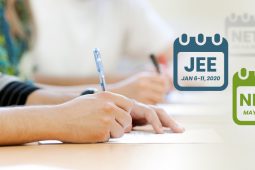List of Deleted Syllabus of CBSE Classes 11 & 12 but useful for JEE/NEET
If you have plans to appear in the JEE or NEET examination, it’s a good idea to start early. However, along with hard work and a disciplined approach, it is important to be thorough with the syllabus of these exams. Also, there are chapters and topics that are excluded from the CBSE Class 11 syllabus and CBSE Class 12 syllabus that is a part of the JEE/NEET curriculum. We take you through the same to keep you updated.
Deleted syllabus of Class 11 CBSE
Biology
| Chapter | Topic | Subtopics |
|---|---|---|
| 1 | The Living World | 1.1 What is Living 1.4 Taxonomical Aids 1.4.2 Botanical Gardens 1.4.3 Museum 1.4.4 Zoological Parks |
| 3 | Plant Kingdom | 3.5 Angiosperms 3.6 Plant Life Cycles and Alternation of Generations |
| 5 | Morphology of Flowering Plants | 5.1.2 Modifications of Root 5.2.1 Modifications of Stem 5.3.4 Modifications of Leaves 5.9.1 Fabaceae 5.9.3 Liliaceae |
| 6 | Anatomy of Flowering Plants | 6.1 The Tissues 6.1.1 Meristematic Tissues 6.1.2.1 Simple Tissues (Para 2, 3) 6.1.2.2 Complex Tissues (Para 4) 6.4 Secondary Growth 6.4.1 Vascular Cambium 6.4.1.2 Activity of the Cambial Ring 6.4.1.3 Spring Wood and Autumn Wood 6.4.1.4 Heartwood and Sapwood 6.4.2 Cork Cambium 6.4.3 Secondary Growth in Roots |
| 7 | Structural Organisation in Animals | 7.1 Animal Tissues 7.1.1 Epithelial Tissue 7.1.2 Connective Tissue 7.1.3 Muscle Tissue 7.1.4 Neural Tissue 7.3 Earthworm 7.3.1 Morphology 7.3.2 Anatomy 7.4 Cockroach 7.4.1 Morphology 7.4.2 Anatomy Summary (Para 2, 3, 4) |
| 9 | Biomolecules | 9.8 Nature of Bond Linking Monomers in a Polymer 9.9 Dynamic State of Body Constituents—Concept of Metabolism 9.10 Metabolic Basis for Living 9.11 The Living State |
| 11 | Transport in Plants | Full Chapter |
| 12 | Mineral Nutrition | Full Chapter |
| 15 | Plant Growth and Development | 15.5 Photoperiodism 15.6 Vernalisation 15.7 Seed Dormancy |
| 16 | Digestion and Absorption | Full Chapter |
| 21 | Neural Control and Coordination | 21.5 Reflex Action and Reflex Arc 21.6 Sensory Reception and Processing 21.6.1 Eye 21.6.1.1 Parts of an Eye 21.6.1.2 Mechanism of Vision 21.6.2 The Ear 21.6.2.1 Mechanism of Hearing |
Physics
| Chapter | Topic | Subtopics |
|---|---|---|
| 1 | Physical World | Physics-scope and excitement; nature of physical laws; Physics, technology and society (To be discussed as a part of Introduction and integrated with other topics) |
| 3 | Motion in a Straight Line | Frame of reference, Motion in a straight line: Position-time graph, speed and velocity |
| 5 | Laws of Motion | Intuitive concept of force, Inertia, Newton’s first law of motion; momentum and Newton’s second law of motion; impulse; Newton’s third law of motion |
| 7 | System of Particles and Rotational Motion | Statement of parallel and perpendicular axes theorems and their applications |
| 8 | Gravitation | Kepler’s laws of planetary motion, Acceleration due to gravity |
| 9 | Mechanical Properties of Solids | Elastic behaviour, shear modulus of rigidity, Poisson’s ratio; elastic energy |
| 11 | Thermal Properties of Matter | Heat, temperature, Heat transfer-conduction, convection and radiation |
| 12 | Thermodynamics | Heat engine and refrigerator |
| 15 | Waves | Fundamental mode and harmonics, Doppler effect |
| Practical | – | No investigatory project and Activity to be demonstrated 8 experiments (clubbed based on skills) in place of 12 |
Chemistry
| Chapter | Topic | Subtopics |
|---|---|---|
| 5 | States of Matter: Gases and Liquids | Full Chapter |
| 9 | Hydrogen | Full Chapter |
| 10 | s-Block Elements | Full Chapter |
| 11 | p-Block Elements | Full Chapter |
| 12 | Environmental Chemistry | Full Chapter |
Mathematics
Nothing is deleted from syllabus
Deleted syllabus of CBSE Class 12
Biology
| Chapter | Topic | Subtopics |
|---|---|---|
| 1 | Reproduction in Organisms | Full Chapter |
| 9 | Strategies for Enhancement in Food Production | Full Chapter |
| 13 | Organisms and Populations | 13.1 Organism and Its Environment 13.1.1 Major Abiotic Factors 13.1.2 Responses to Abiotic Factors 13.1.3 Adaptations |
| 14 | Ecosystem | 14.6 Ecological Succession 14.6.1 Succession of Plants 14.7 Nutrient Cycling 14.7.1 Ecosystem – Carbon cycle 14.7.2 Ecosystem – Phosphorus Cycle 14.8 Ecosystem Services |
| 16 | Environmental Issues | Full Chapter |
Mathematics
| Chapter | Topic | Subtopics |
|---|---|---|
| 1 | Relations and Functions | Inverse of a Relation, Composition of a Relation |
| 2 | Inverse Trigonometric Functions | Elementary Properties of ITF’s |
| 3 | Matrices | Concept of elementary row and column operations |
| 4 | Determinants | Properties of determinants |
| 5 | Continuity and Differentiability | Derivative of composite function, Rolle’s and Lagrange’s Mean Value, and Theorems (without proof) and their geometric interpretation |
| 6 | Application of Derivatives | Tangents and Normals and Use of Derivatives in Approximation |
| 7 | Integrals | Definite integrals as a limit of a sum |
| 8 | Application of Integrals | Area between the two above curves |
| 9 | Differential Equations | Nothing is deleted |
| 10 | Vectors | Scalar triple product of vectors |
| 11 | Introduction to 3D Geometry | Introduction to 3D Geometry – Co-planar lines, Cartesian and vector, Equation of a plane, Angle between (i) two lines, (ii) two planes, (iii) a line and a plane, Distance of a point from a plane |
| 12 | Probability | Probability Variance of random variable, Binomial Distribution |
| 13 | Linear Programming | Linear Programming – Different types of linear programming (L.P.) problems mathematical formulation of L.P. problems |
Physics
| Chapter | Topic | Subtopics |
|---|---|---|
| 1 | Electrostatics | Uniformly charged thin spherical shell (field inside and outside) |
| 2 | Electrostatic potential and capacitance | Nil |
| 3 | Current electricity | Carbon resistors, colour code for carbon resistors; series an parallel combinations resistors |
| 4 | Moving charges and Magnetism | Cyclotron |
| 5 | Magnetism and matter | Magnetic field intensity due to a magnetic dipole (bar Magnet) along axis and perpendicular to its axis; Torque on a magnetic dipole (bar magnet) in a uniform magnetic field; Para-, dia and ferro – magnetic substances, with examples; Electromagnets and factors affecting their strengths. Permanent magnets |
| 6 | Electromagnetic induction | Nil |
| 7 | Alternating current | Power factor; Wattles current |
| 8 | Electromagnetic waves | Basic idea of displacement current |
| 9 | Ray optics | Reflection of light, spherical mirrors, (recapitulation) mirror formula; Scattering of light – blue colour sky and reddish appearance of the sun sunrise and sunset |
| 10 | Wave optics | Resolving power of microscope and astronomical telescope; Polarisation, plane polarise light, Brewster’s law, uses of plane polarised light and polaroids |
| 11 | Dual nature of radiation | Davisson-Germer experiment |
| 12 | Atoms | NIL |
| 13 | Nuclei | Radioactivity, alpha, beta and gamma particles/rays and their properties; radioactive decay law, hal life and mean life; Binding energy per nucleon and its variation with mass number |
| 14 | Semiconductor device | Zener diode and their characteristics, zener diode as a voltage regulator |
Chemistry
| Chapter | Topic | Subtopics |
|---|---|---|
| 1 | Solid State | Full Chapter |
| 2 | Surface Chemistry | Full Chapter |
| 3 | General Principles and Process of Isolation of Elements | Full Chapter |
| 4 | The p-Block Elements | Full Chapter |
| 5 | Polymers | Full Chapter |
| 6 | Chemistry in Everyday Life | Full Chapter |














